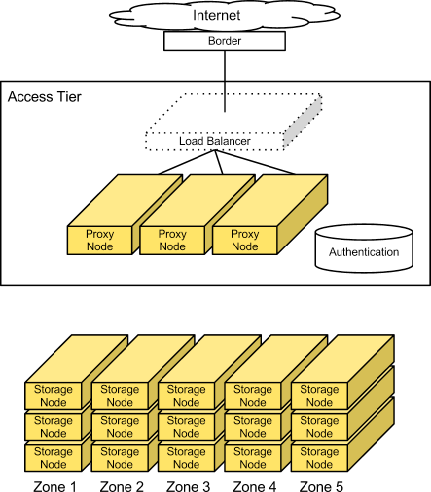Large-scale deployments segment off an access tier, which is considered the Object Storage system's central hub. The access tier fields the incoming API requests from clients and moves data in and out of the system. This tier consists of front-end load balancers, ssl-terminators, and authentication services. It runs the (distributed) brain of the Object Storage system: the proxy server processes.
Because access servers are collocated in their own tier, you can scale out read/write access regardless of the storage capacity. For example, if a cluster is on the public Internet, requires SSL termination, and has a high demand for data access, you can provision many access servers. However, if the cluster is on a private network and used primarily for archival purposes, you need fewer access servers.
Since this is an HTTP addressable storage service, you may incorporate a load balancer into the access tier.
Typically, the tier consists of a collection of 1U servers. These machines use a moderate amount of RAM and are network I/O intensive. Since these systems field each incoming API request, you should provision them with two high-throughput (10GbE) interfaces - one for the incoming "front-end" requests and the other for the "back-end" access to the object storage nodes to put and fetch data.


